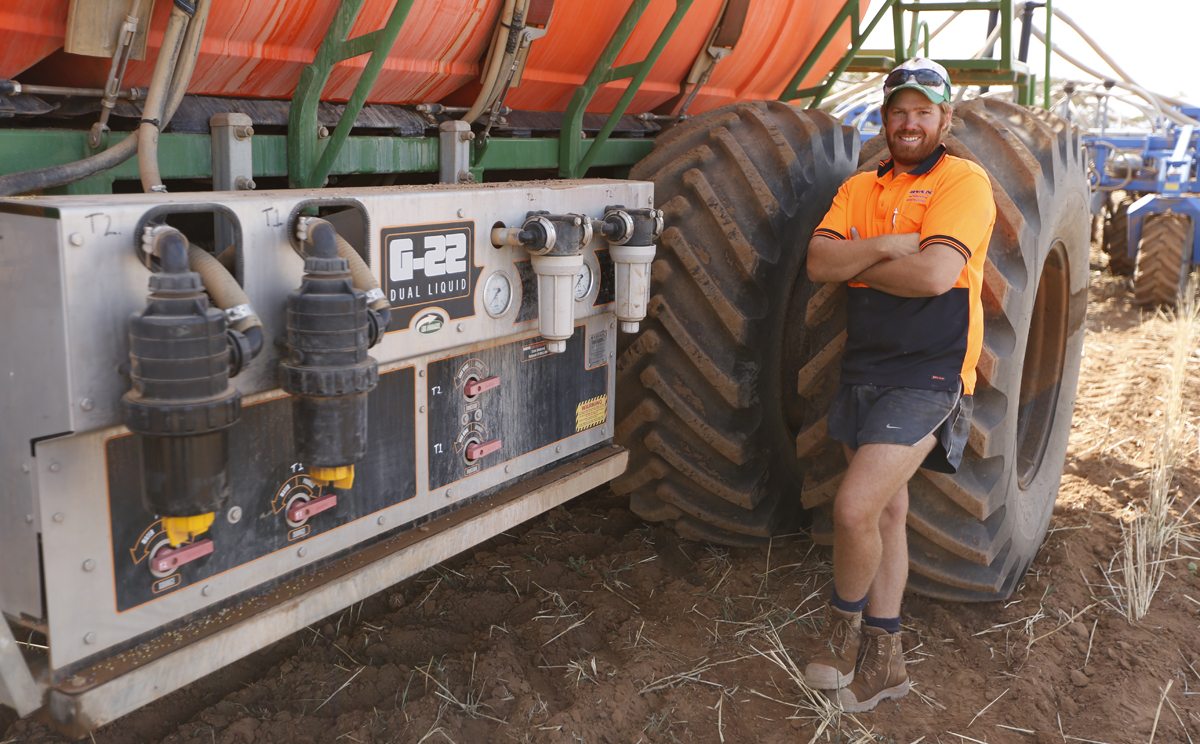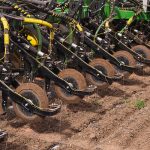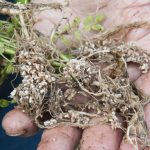Liquids in-furrow key to sustainable farming
FULL STORY PDF DOWNLOAD HERE 
Going into his fifth year of using liquid products, Leeton Ryan from Winnambool in Victoria’s Mallee is more convinced than ever of the key role liquids will play in looking after his soils, now and into the future.
After attending a soil health day, Leeton became interested in the potential of liquid delivery systems. For him it was about getting away from the hassles associated with granular fertilisers and putting something back into his soils.
“We weren’t having much fun with granular urea – we could never get it to flow right and it clumped up,” said Leeton.
Leeton purchased Liquid Systems’ G22 dual liquid auto-rate injection system, which enables him to apply two separate liquids with full independent rate control.
“Productivity has improved because filling is quicker with liquids. I can do anything I want from within the cab – change rates, turn things on and off, use variable rates,” he said.
The precision, flexibility and ease of using of Liquid Systems technology have helped Leeton improve productivity and soil health. Trace element application is another reason he moved to a liquid system. He can apply trace elements consistently at very low rates across the farm.
“We’re trying to put something back into our worst ground and it works for the rest of the farm to have liquid urea and trace elements too.”
“I’ve got to be able to justify 0.2t yield difference, compared to what it would be like if we don’t use trace elements and liquids. We always seem to get at least that or better yield – it’s pretty consistent.”
Leeton has also noticed a difference with his self-replacing medic crops and his sheep. While rainfall is still the biggest limiting factor in growth, he’s found that his medic cover has improved by 25-30% following a crop treated with liquids. These benefits are flowing on throughout his farming system.
“We put trace element lick blocks out to keep the sheep healthy pre-lambing and the sheep will only lick it to get what it needs. Our sheep don’t go through near as many lick blocks as they used to – the plants are taking up the nutrition and giving us healthier sheep as well.’’
Although Leeton isn’t big on trials – he doesn’t like any of the farm missing out on crucial nutrients – he believes in the system because of the results he’s seeing out in the paddock. Leeton stresses the importance of not just looking at set up costs for liquid delivery systems but in doing the right sums to justify that cost. Liquid fertilisers and trace elements have helped him to achieve consistent yields and save on handling and delivery headaches.
“We’ve had some pretty low rainfall years, and we can justify the system as we’ve had some pretty good crops in those years – it all comes back to the technology and the liquid system we’re using.”
Leeton is excited about the liquid options and the impact they’ll have on plant health in the future. Treating seed with liquids in furrow is already much easier and more precise than mixing inoculants with the seed before application. New plant health products continue to be developed to treat seeds and the easiest way to apply these will be in furrow. Not only will the seed be treated, but the soil around it as well.
“The options are endless when you have liquids, as long as you can throw it in water and mix it in you’re right.”
Interview by Dr Angela Lush
| The bottom line | |
|---|---|
| Who: | Leeton Ryan |
| Where: | Winnambool Victoria |
| What: | Cereal cropping and sheep grazing on 550-6000 hectares |
| Soil Type: | 80% of property is red sandy loam |
| Equipment: | Liquid Systems G22 dual pump and control module |
| Aims: |
|
| Outcomes: |
|








